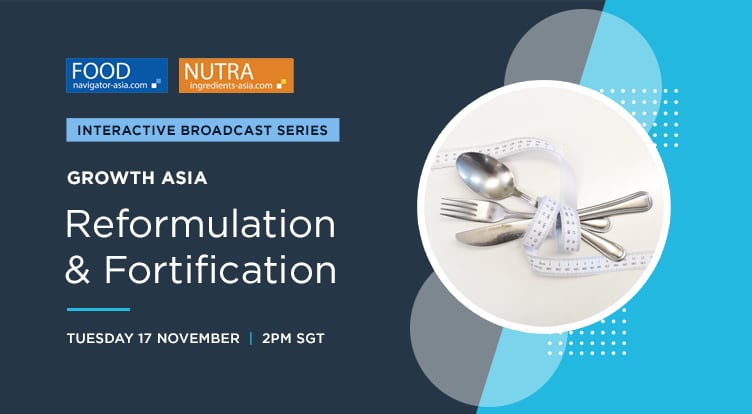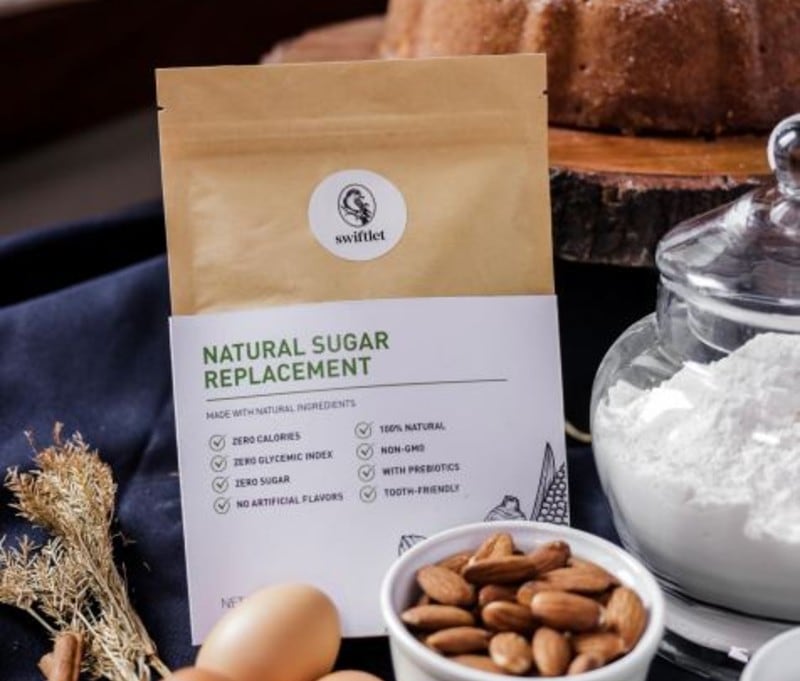The health and wellness trend has been booming in the Asia Pacific F&B industry for the past few years and even more so since COVID-19 hit the region, leading to a rapid increase in reformulation and fortification efforts by food and beverage manufacturers.
However, an expert panel which convened at the recent Reformulation and Fortification edition of our Growth Asia 2020 series agreed that the processes involved are much more complicated that just adding good ingredients or removing bad ingredients, as doing this would negatively impact product taste, which remains key to gaining consumer acceptance.
The panel comprised of Mondelez South East Asia Business Unit President Glenn Caton, Symrise Flavours APAC Regional Portfolio and Product Management Director Dirk Schrader, Tate & Lyle Technical Director David Lynas, Food Safety and Standards Authority of India (FSSAI) Director Inoshi Sharma, and Glycemic Index Foundation CEO Kathy Usic.
Caton, Schrader, Lynas and Symrise Vice President, Technical Yoke Wong also provided introductory keynote insights. The event was hosted by FoodNavigator-Asia and NutraIngredients-Asia editor-in-chief Gary Scattergood.
“Taste and value remain the two biggest drivers of consumer choice,” Caton said in his opening statement.
“Tweaking ingredients will have various impacts and removing something means you need to add something in [so it’s not that simple] – take chocolate for example, which Is primarily made of sugar, milk solids and cocoa. If you reduce sugar, you’re probably going to need to add milk solids which will instead increase calories, and consumers won’t like that either.
“So at Mondelez we’re focused on less demonizing single nutrients like sugar but going for a more multi-pronged approach like providing consumers with options such as smaller package sizes and better on-pack labelling information so they can make that better choice.
“That said we have also reformulated to provide less-sugar options where it works – we have 25% Less Sugar options in our The Natural Confectionery Co jelly sweet products in Australia, and a 25% Less Sugar Cadbury Milk option in India.
“We have also fortified various products to tackle malnutrition issues, such as Tiger Biskuat biscuits in Indonesia with nine vitamins and minerals, powdered drink Tang in the Philippines is fortified with vitamin C, and Jacob’s biscuits in Malaysia have added calcium.”
At present, Mondelez believes that the next generation of technological solutions for reformulation and fortification lies in areas such as sugar alternatives and texture which can retain good taste and value for consumers.
Schrader concurred with Caton on the importance of taste in reformulating and fortifying products, adding that sugar is a particularly tricky item to replace, despite the widespread calls for its removal.
“Taste remains the key driver of consumer preference, and so also remains the key change in reformulation efforts,” he said.
“In all of this, sugar remains the gold standard as an ingredient [in terms of taste] – no single molecule has the same dynamics as sugar, and a combination of different substances is needed to achieve the same taste.”
This was echoed by Lynas who stressed that there are multiple aspects to taste that need to be taken into consideration when considering the reduction of sugar in a product.
“Sugar has multiple functions beyond just sweet from mouthfeel to texture to bulk and more, so really it’s not as simple as taking it out and just putting something back in,” he said.
“The more sugar you want to remove, the more ingredients are needed to make up for it – e.g. a 10% to 15% sugar reduction will just need replacement with a sweetener, but a 50% to 100% reduction will need a combination of multiple sweeteners and fibres/hydrocolloids for mouthfeel.
“So sugar reduction is really very much a balancing act, with taste as the most important component that needs to be balanced with health, functionality, price, government regulations and more.”
Key areas of focus
That said, Lynas added that sugar reduction continues to remain a key target for reformulation within the Asia Pacific region.
“Sugar and calorie reduction is still one of the most popular options, and there is also protein fortification. An interesting one that has been on the rise is based on understanding gut health, so things like fibre, kombucha and so on – there has been a rise in these and I believe we will see more in the coming year,” he said.
Wong added that in terms of product categories, there is also a lot of opportunity in the beverages section.
“One area is in reformulating plant-based milk and milk replacements to achieve the same nutritional levels as dairy milk, as milk is still viewed as one of the most nutritious products by consumers,” she said.
“The other is in areas with high sugar concerns such as sugar-sweetened beverages and energy drinks, drinks that previously had 50g sugar or more – these are very ripe for reformulation.
“There are also products that have a poor image in consumers’ eyes, such as instant noodles, that could be reformulated to be more accepted.”
When it comes to low-GI developments, Usic opined that reformulation in rice shows enormous opportunity as it is such a major crop in the region.
“So many consumers in APAC eat rice as a staple, it is a major product and contributes significantly to the glycaemic index, so the [impacts of] reformulating this are enormous,” she said.
“Bread is another area, as so many cultures eat this in so many different styles – getting this to be low-GI would also be big.”
Regulatory intervention
Debates about sugar taxes, salt taxes and overall junk food taxes have been raging on in the region for some time, and the industry remains steadfastly opposed to regulation in this area.
“Eating healthy needs to be consumer-led, and there needs to be a holistic strategy in place – taxation is not the right mechanism,” said Caton.
“If governments could work in partnership with the industry and support the industry to innovate and reformulate, this would have results that better empower consumers to choose healthier options.”
Imposing regulations on fortification is much less discussed, but in India, the FSSAI is already taking steps to make this mandatory.
“Food fortification standards are in place for staple foods in India including oil, milk, wheat, rice and salt. In a few months, it will be mandatory for oil and milk in the organized sector to be fortified,” said Sharma.
“Rice will follow in three to four years, although rice, wheat and salt in India’s public distribution system. We are particularly concerned about anaemia locally, so the nutrients we are mandating include iodine and iron (double-fortified salt), vitamins A and D (oil and milk) and several others like niacin and again iron in wheat and rice.”
In terms of cost, she expects no costs to be transferred to consumers for oil and milk, but possibly an INR2 to INR3 (US$0.027 to US$0.040) extra cost for double-fortified salt.
“That’s why we’re already doing this in the public distribution system, to make the fortified options popular with the public first so manufacturers will have a market to sell to later,” she said.
Overall though, although the impacts of government regulations may be quicker in some ways, the panel believed that consumer demand was still the main driver behind reformulation and fortification efforts in the region.
“Traditional regulations do show effect - for example the sugar tax in the Philippines led to a boom in reformulation overnight – but it really is consumer demand that is driving this, particularly after COVID-19,” said Lynas.
“Th younger generation especially is concerned about health and sustainability, so I would hope to see this more consumer than government-driven moving forward.”
Watch the Growth Asia 2020 Reformulation and Fortification edition again for free here.





